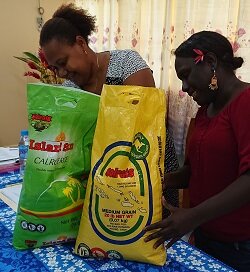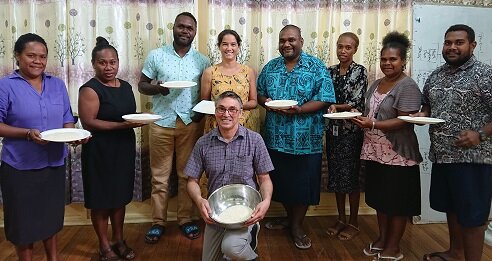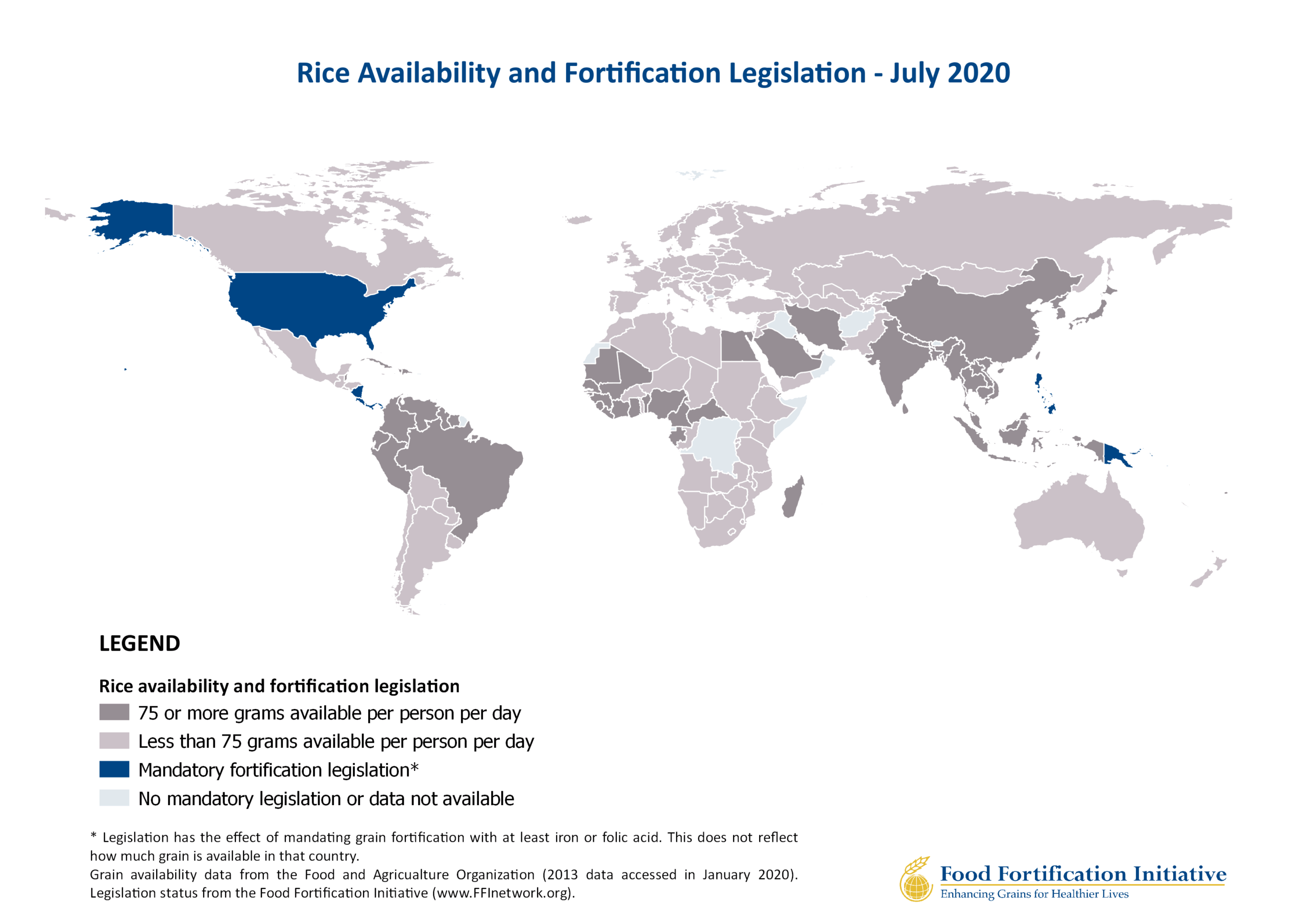Fortified rice could ‘contribute considerably’ to nutrient intake
The first shipment of fortified, imported rice arrived in Solomon Islands in June. “This will help prevent the adverse effects of nutritional deficiencies such as impaired cognitive development, low immunity, and birth defects of the spine and brain,” said the Ministry of Health and Medical Services Permanent Secretary Pauline McNeil.
In November 2018, the Minister of Health and Medical Services of the Solomon Islands, the Hon. Tautai Agikimua Kaitu’U, approved a standard that required rice to be fortified with iron, zinc, folic acid, thiamin and niacin. The standard allowed several months for implementation.
To determine appropriate fortification levels and expected nutrient contribution, researchers analyzed food purchases to estimate food consumption. Using data from the 2012-2013 Household Income and Expenditure Surveys (HIES), they concluded that fortified rice would “contribute considerably” to nutrient intake among women of reproductive age. They looked specifically at daily intake of iron, zinc, and the B vitamins folic acid, thiamin, and niacin. The work was published in the Food and Nutrition Bulletin.
The 2015 Demographic Health Survey for Solomon Islands showed:
- 41% of women aged 15 – 49 years had anemia
- 54% of pregnant women had anemia
- 39% of children aged 6 to 59 months had anemia
Deficiencies of iron, zinc, and folic acid (vitamin B9) are among the nutritional causes of anemia. Consequently, fortifying food with these nutrients can contribute to lowering the prevalence of anemia in Solomon Islands.
In addition, about 12 pregnancies a year are affected by a brain or spine birth defect in Solomon Islands. Fortifying food with folic acid is likely to reduce the number of affected pregnancies.


Dian Row, Jahreth Limarii, Fiona Mulhearn, Nemia Bainivalu, Zema Joseph,
Annie Eli, and Muffat Taro. Kneeling is Dennis Bittisnich.
- World Health Organization 2018 guideline for fortification of rice with vitamins and minerals as a public health strategy
- Rapid qualitative method to test for kernels fortified with iron
- Technical manual for rice fortification in a toolkit from GAIN and PATH
- Worksheet for stakeholders in countries considering mandating fortification of rice imports
- Tool for monitoring imports of rice and flour
- Potential for rice fortification in 12 countries in West Africa

In the above map, dark gray countries are where more than 75 grams of rice per person per day is available for human consumption, based on data from the Food and Agriculture Organization of the United Nations. In these countries, rice fortification may be able to make an important contribution to the population’s nutrition.



